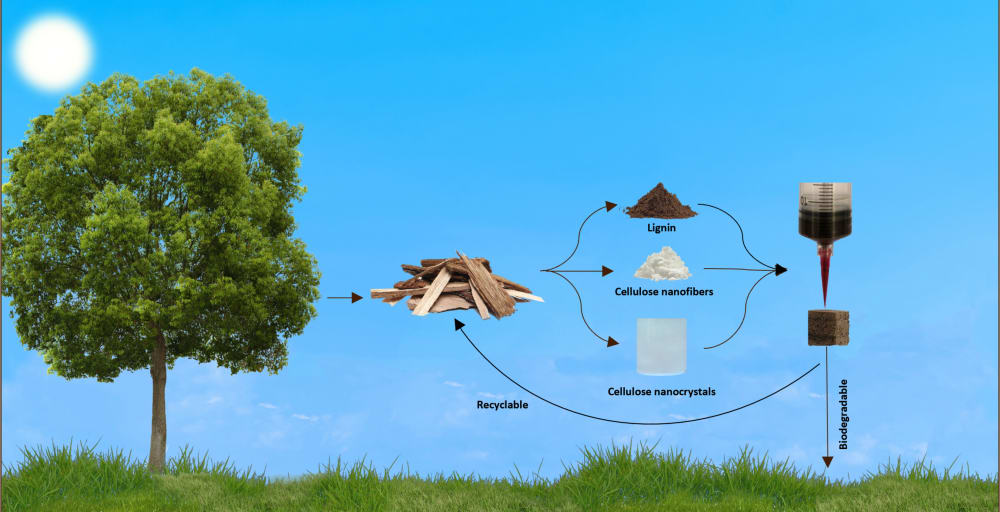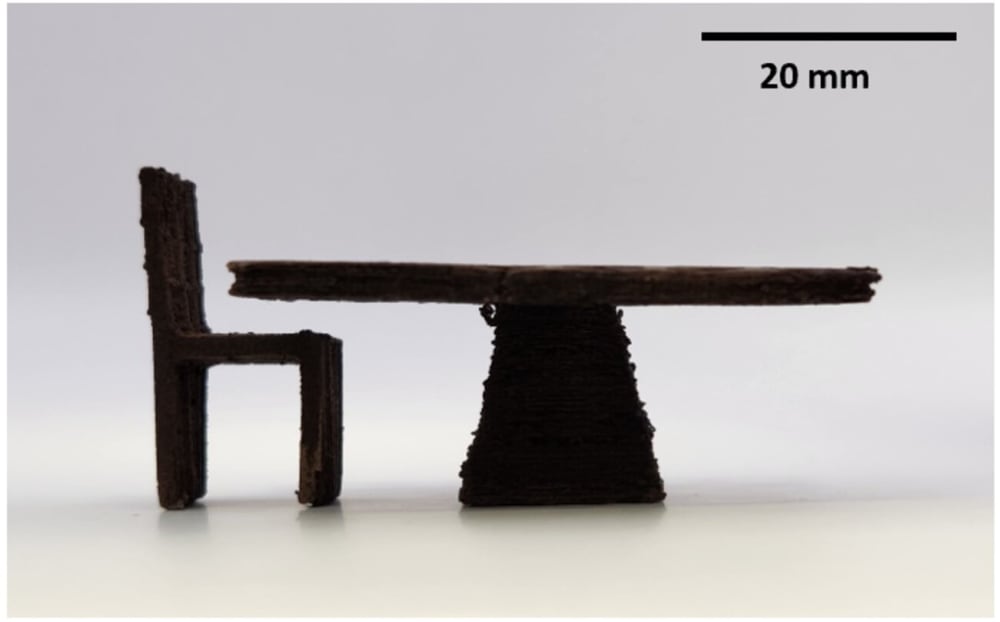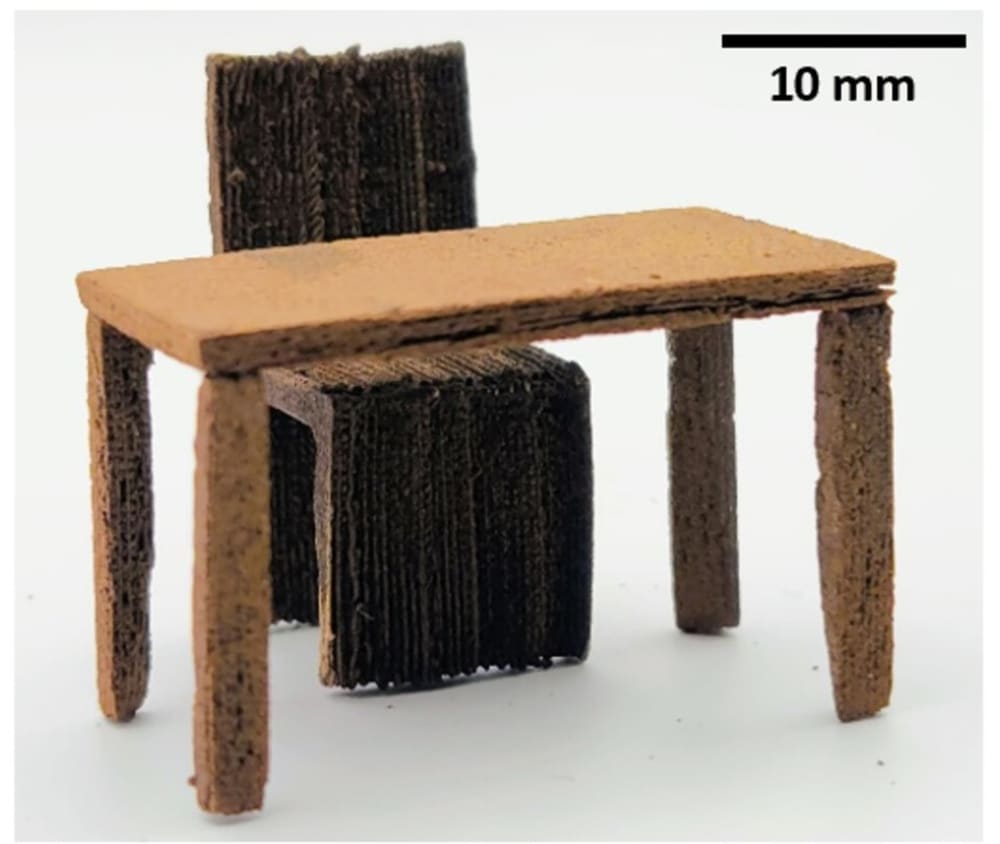

Wood has long been a cornerstone material in construction and design, yet traditional subtractive manufacturing methods often result in significant wood waste and elevated production costs. In contrast, additive manufacturing reduces material waste and production costs significantly, as it builds structures layer by layer, using only the necessary amount of material. It also allows for intricate designs that would be challenging or impossible to achieve with conventional subtractive manufacturing techniques. This work introduces a novel approach to facilitate the additive manufacturing of wood structures from the fundamental building blocks of natural wood.
Our methodology utilizes, for the first time, an additive-free, water-based ink made of lignin and cellulose, the primary building blocks of natural wood, enabling the 3D printing of architecturally designed wooden structures via direct ink writing. Producing our 3D-printed wood structures involves a straightforward and scalable process. The water-based ink is prepared by mixing lignin and cellulose in the same ratios as present in natural wood. This ink is then used in a direct ink writing system, which deposits the material layer by layer according to the desired architectural design. The process is highly controllable and repeatable, ensuring consistent quality in the final product, printing structures with features as small as 0.2 mm. The resulting printed structures closely mimic natural wood's visual, textural, olfactory, and mechanical properties.
Furthermore, the versatile nature of the direct ink writing technique enables the introduction of various reinforcements and functionalities into the wood ink. For instance, the mechanical properties of the 3D-printed wood have been enhanced by introducing natural fibers into the ink.
Natural wood also has an inherent lack of fire resistance, which largely limits its potential applications in areas where fire safety is critical, such as in the construction of aircraft interiors and other high-risk environments. On the other hand, our 3D-printed wood can be easily modified to be fire-resistant by introducing an intumescent additive into the ink. Thus, the 3D printing of wood via direct ink writing offers a sustainable pathway for upcycling and recycling wood and presents a promising solution for developing fire-resistant wood structures with superior mechanical properties.
Our innovative approach has significant market potential due to its practical applications and alignment with current trends in sustainability and safety. 3D printing of cement in recent years has shown us that once an ink can be prepared to facilitate direct ink writing, it can be quickly scaled up to the construction scale. Therefore, direct ink writeable wood ink has excellent potential to be scaled up in the construction industry, as it seeks materials that combine aesthetic appeal, structural integrity, and fire resistance. Our design represents a substantial advance over current practices by reducing waste, enabling recyclability, and enhancing fire resistance.
The feasibility of our approach, coupled with its broad market potential, positions it as a promising solution for sustainable and safe wood construction.
Video
-
Awards
-
 2024 Sustainable Technology Honorable Mention
2024 Sustainable Technology Honorable Mention -
 2024 Top 100 Entries
2024 Top 100 Entries
Like this entry?
-
About the Entrant
- Name:Muhammad M Rahman
- Type of entry:teamTeam members:
- Md Shajedul Hoque Thakur
- Muhammad M. Rahman
- Chen Shi
- Patent status:none








